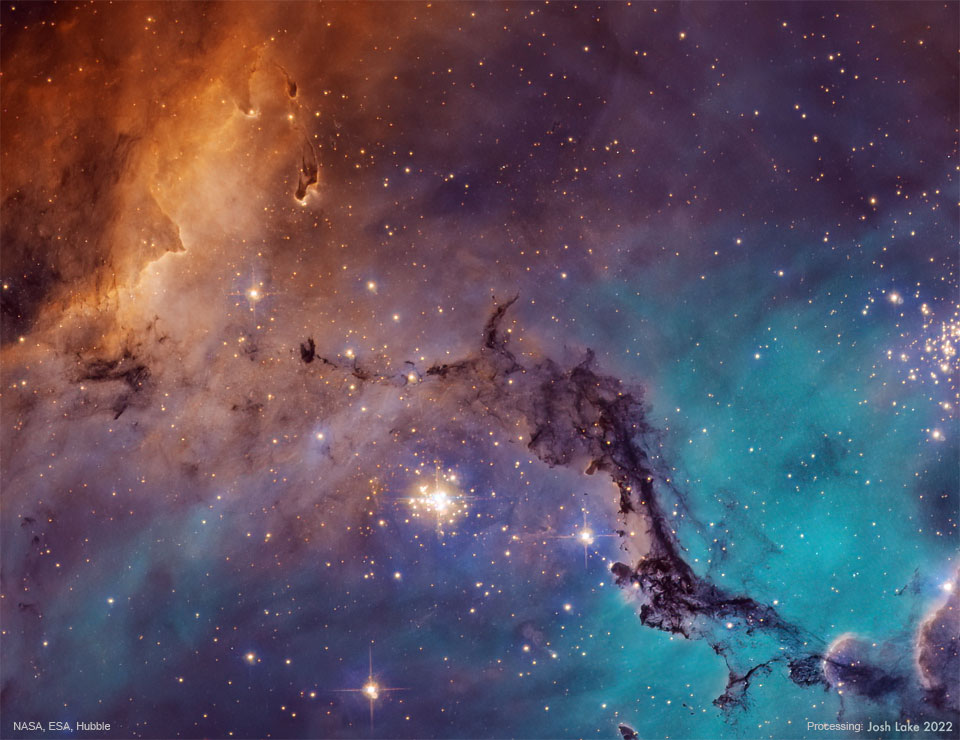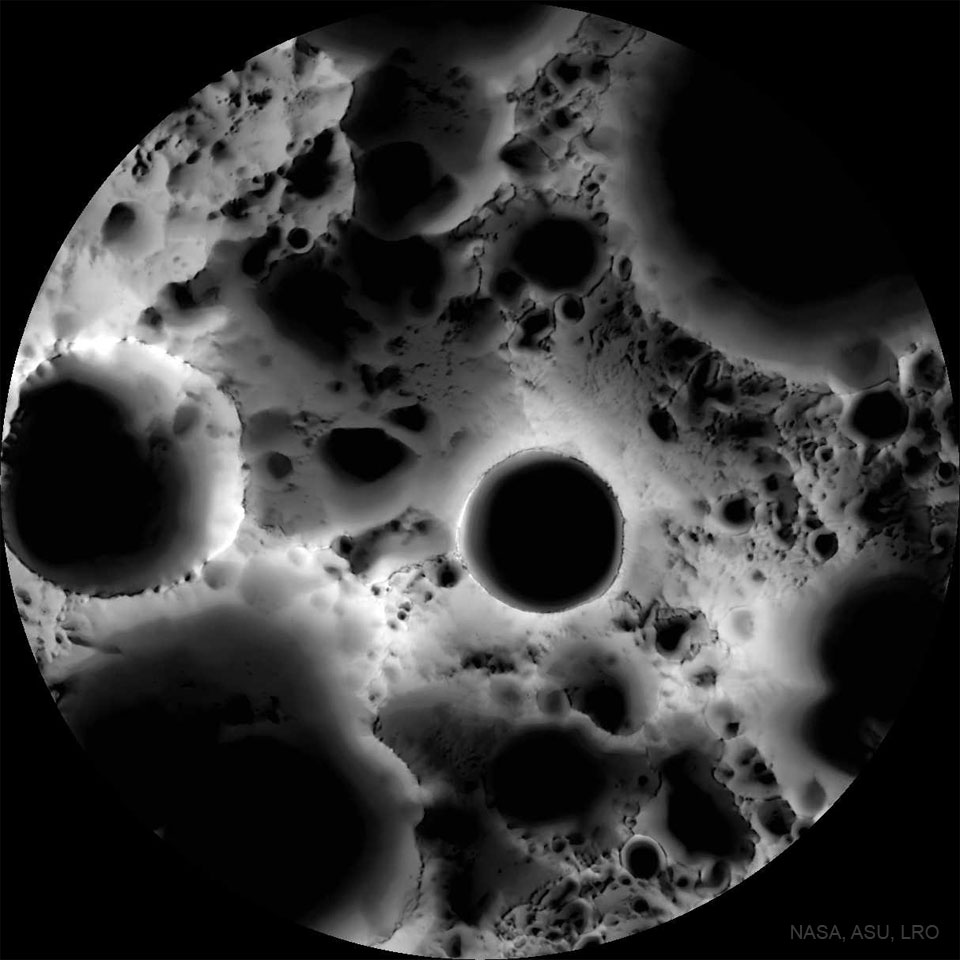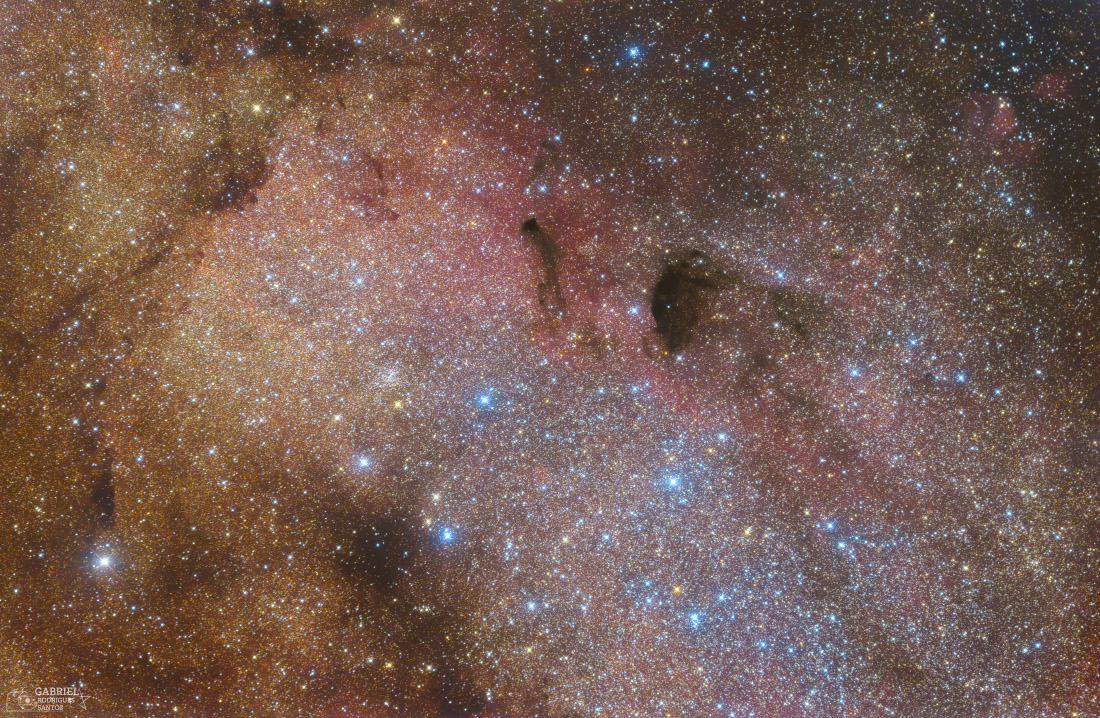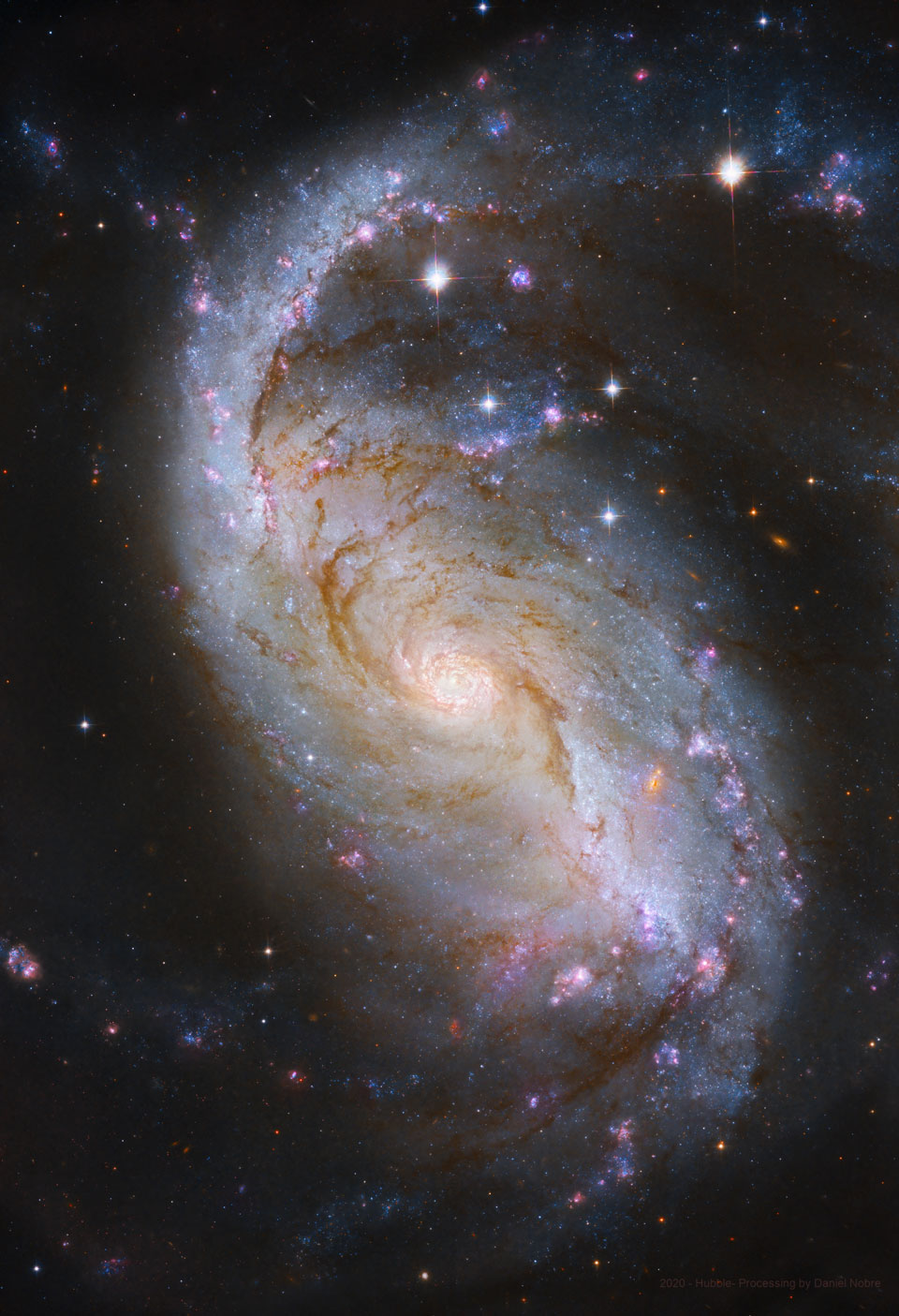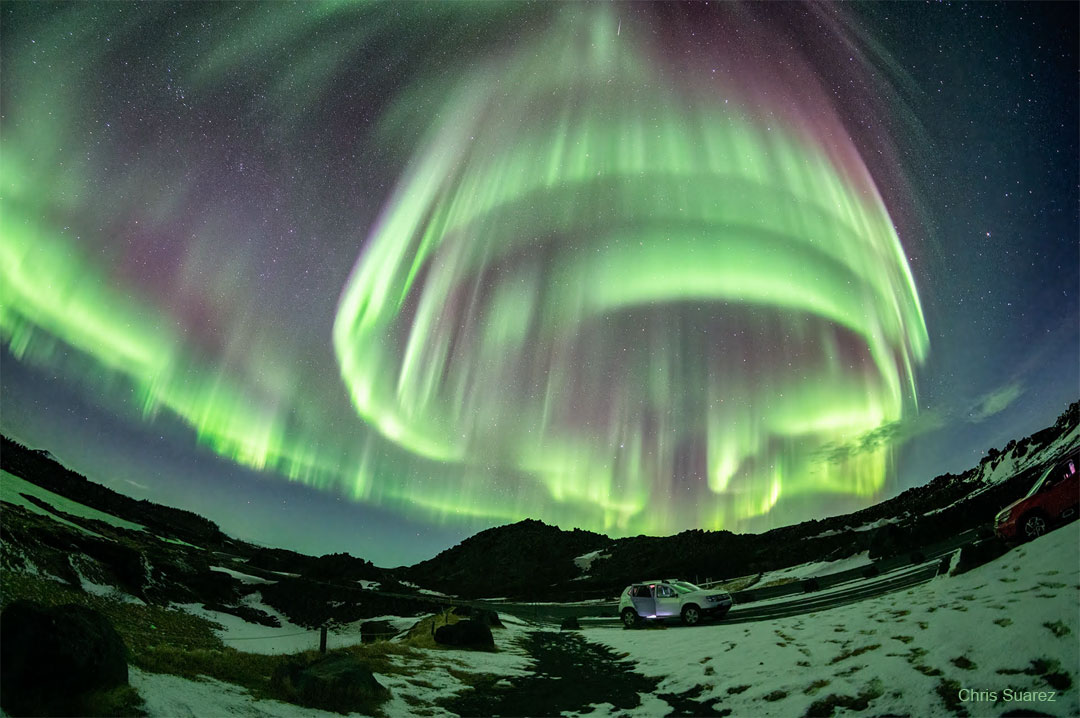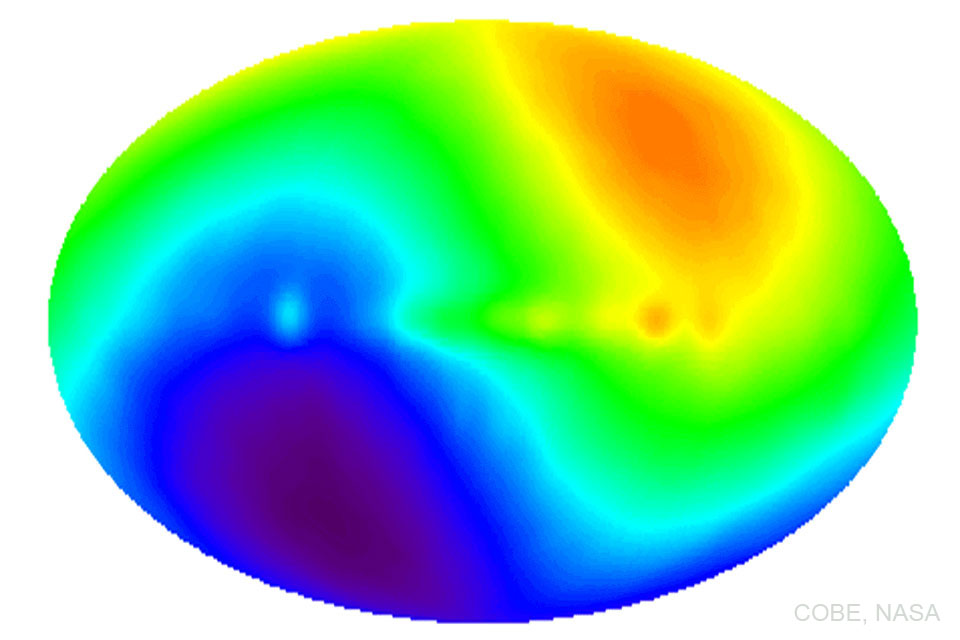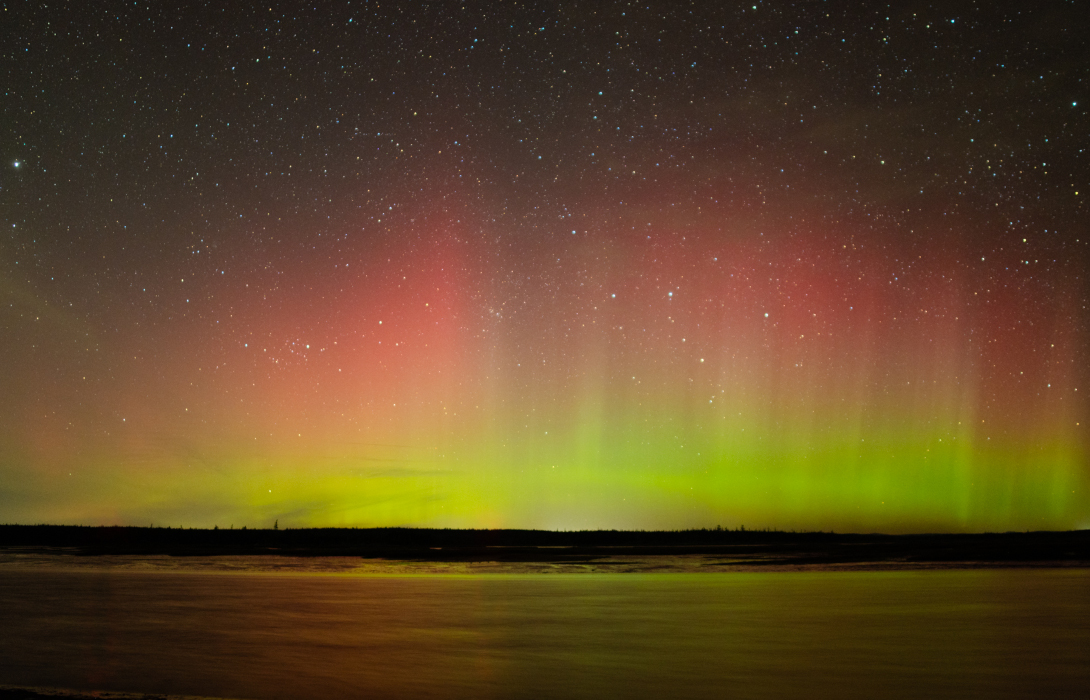Image Credit: NASA, ESA; Processing: Josh Lake
Nombre total de pages vues
12/04/2022
ASTRONOMY - N11: Star Clouds of the LMC
Image Credit: NASA, ESA; Processing: Josh Lake
10/04/2022
ASTRONOMY - Shadows at the Moon's South Pole
Image Credit: NASA, Arizona State U., Lunar Reconnaissance Orbiter
Explanation: Was this image of the Moon's surface taken with a microscope? No -- it's a multi-temporal illumination map made with a wide-angle camera. To create it, the Lunar Reconnaissance Orbiter spacecraft collected 1,700 images over a period of 6 lunar days (6 Earth months), repeatedly covering an area centered on the Moon's south pole from different angles. The resulting images were stacked to produce the featured map -- representing the percentage of time each spot on the surface was illuminated by the Sun. Remaining convincingly in shadow, the floor of the 19-kilometer diameter Shackleton crater is seen near the map's center. The lunar south pole itself is at about 9 o'clock on the crater's rim. Crater floors near the lunar south and north poles can remain in permanent shadow, while mountain tops can remain in nearly continuous sunlight. Useful for future outposts, the shadowed crater floors could offer reservoirs of water-ice, while the sunlit mountain tops offer good locations to collect solar power.
08/04/2022
ASTRONOMY - Hale-Bopp: The Great Comet of 1997
Image Credit & Copyright: Stefan Seip (TWAN)
Explanation: Only twenty-five years ago, Comet Hale-Bopp rounded the Sun and offered a dazzling spectacle in planet Earth's night skies. Digitized from the original astrophoto on 35mm color slide film, this classic image of the Great Comet of 1997 was recorded a few days after its perihelion passage on April 1, 1997. Made with a camera and telephoto lens piggy-backed on a small telescope, the 10 minute long, hand-guided exposure features the memorable tails of Hale-Bopp, a whitish dust tail and blue ion tail. Here, the ion tail extends well over ten degrees across the northern sky. In all, Hale-Bopp was reported as visible to the naked eye from late May 1996 through September 1997. Also known as C/1995 O1, Hale-Bopp is recognized as one of the most compositionally pristine comets to pass through the inner Solar System. A visitor from the distant Oort cloud, the comet's next perihelion passage should be around the year 4380 AD. Do you remember Hale-Bopp?
07/04/2022
ASTRONOMY - Messier 24: Sagittarius Star Cloud
Image Credit & Copyright: Gabriel Rodrigues Santos
06/04/2022
ART FRACTAL - Benoit Mandelbrot
ASTRONOMY - NGC 1672: Barred Spiral Galaxy from Hubble
Image Credit: Hubble Legacy Archive, NASA, ESA; Processing & Copyright: Daniel Nobre
Explanation: Many spiral galaxies have bars across their centers. Even our own Milky Way Galaxy is thought to have a modest central bar. Prominently barred spiral galaxy NGC 1672, featured here, was captured in spectacular detail in an image taken by the orbiting Hubble Space Telescope. Visible are dark filamentary dust lanes, young clusters of bright blue stars, red emission nebulas of glowing hydrogen gas, a long bright bar of stars across the center, and a bright active nucleus that likely houses a supermassive black hole. Light takes about 60 million years to reach us from NGC 1672, which spans about 75,000 light years across. NGC 1672, which appears toward the constellation of the Dolphinfish (Dorado), has been studied to find out how a spiral bar contributes to star formation in a galaxy's central regions.
05/04/2022
ASTRONOMY - Seven Sisters versus California
Image Credit & Copyright: Neven Krcmarek
Explanation: On the upper right, dressed in blue, is the Pleiades. Also known as the Seven Sisters and M45, the Pleiades is one of the brightest and most easily visible open clusters on the sky. The Pleiades contains over 3,000 stars, is about 400 light years away, and only 13 light years across. Surrounding the stars is a spectacular blue reflection nebula made of fine dust. A common legend is that one of the brighter stars faded since the cluster was named. On the lower left, shining in red, is the California Nebula. Named for its shape, the California Nebula is much dimmer and hence harder to see than the Pleiades. Also known as NGC 1499, this mass of red glowing hydrogen gas is about 1,500 light years away. Although about 25 full moons could fit between them, the featured wide angle, deep field image composite has captured them both. A careful inspection of the deep image will also reveal the star forming region IC 348 and the molecular cloud LBN 777 (the Baby Eagle Nebula).
04/04/2022
ASTRONOMY - A Vortex Aurora over Iceland
Image Credit & Copyright: Christophe Suarez
03/04/2022
ASTRONOMY - CMB Dipole: Speeding Through the Universe
Image Credit: DMR, COBE, NASA, Four-Year Sky Map
Explanation: Our Earth is not at rest. The Earth moves around the Sun. The Sun orbits the center of the Milky Way Galaxy. The Milky Way Galaxy orbits in the Local Group of Galaxies. The Local Group falls toward the Virgo Cluster of Galaxies. But these speeds are less than the speed that all of these objects together move relative to the cosmic microwave background radiation (CMBR). In the featured all-sky map from the COBE satellite in 1993, microwave light in the Earth's direction of motion appears blueshifted and hence hotter, while microwave light on the opposite side of the sky is redshifted and colder. The map indicates that the Local Group moves at about 600 kilometers per second relative to this primordial radiation. This high speed was initially unexpected and its magnitude is still unexplained. Why are we moving so fast? What is out there?
02/04/2022
ASTRONOMY - Nova Scotia Northern Lights
2022 April 2
Image Credit & Copyright: Jason Dain
Explanation: This almost otherworldly display of northern lights was captured in clear skies during the early hours of March 31 from 44 degrees north latitude, planet Earth. In a five second exposure the scene looks north from Martinique Beach Provincial Park in Nova Scotia, Canada. Stars of the W-shaped constellation Cassiopeia shine well above the horizon, through the red tint of the higher altitude auroral glow. Auroral activity was anticipated by skywatchers alerted to the possibility of stormy space weather by Sun-staring spacecraft. The predicted geomagnetic storm was sparked as a coronal mass ejection, launched from prolific solar active region 2975, impacted our fair planet's magnetosphere.
ASTRONOMY - STEVE: A Glowing River over France
2024 October 28 STEVE: A Glowing River over France Credit & Copyright: Louis LEROUX-GÉRÉ Explanation: Sometimes a river of hot gas flo...

-
2022 September 26 All the Water on Planet Earth Illustration Credit: Jack Cook, Adam Nieman, Woods Hole Oceanographic Institution ; Data ...
-
2025 May 11 The Surface of Venus from Venera 14 Image Credit: Soviet Planetary Exploration Program , Venera 14 ; Processing & Copyri...
